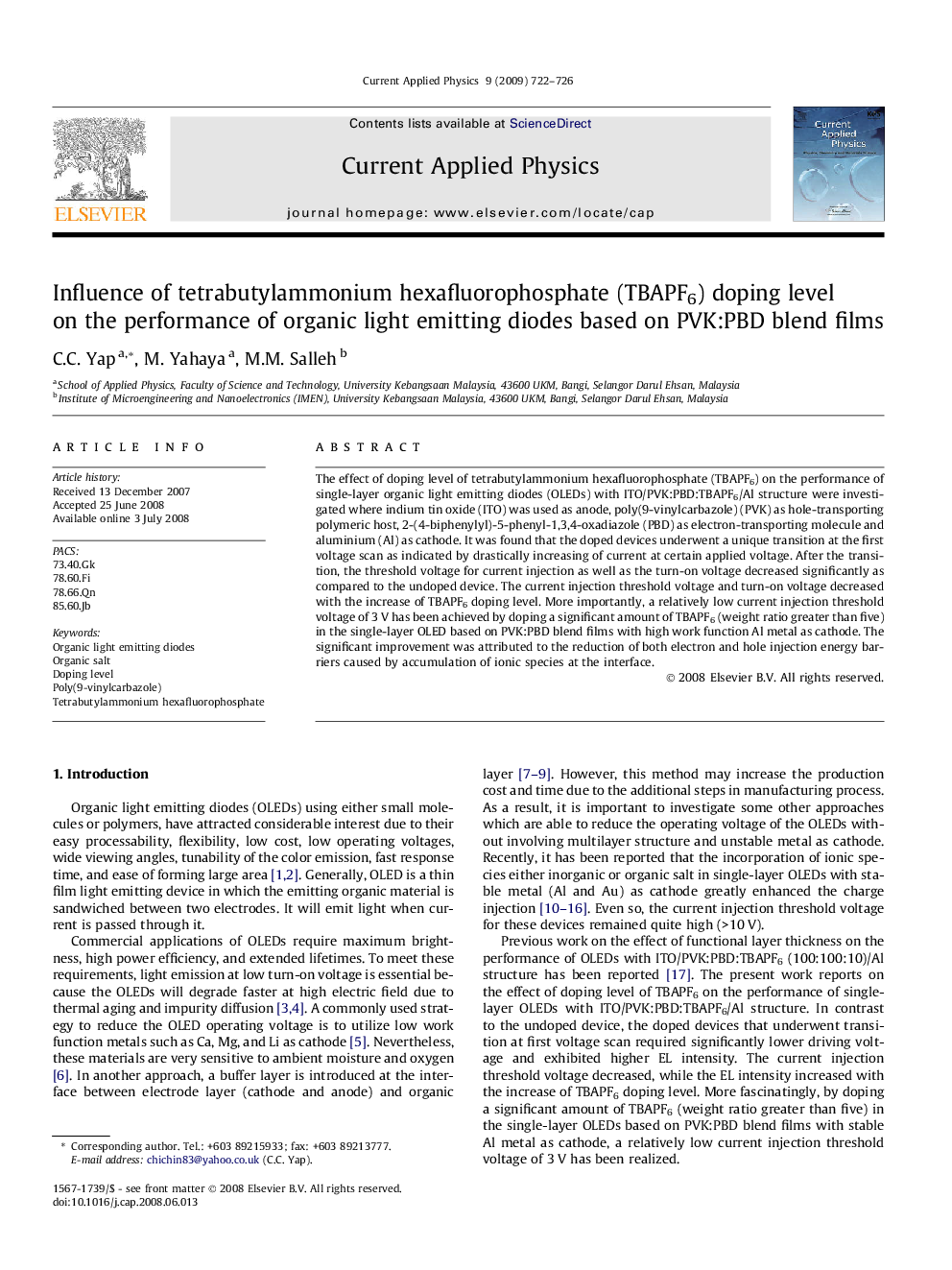| Article ID | Journal | Published Year | Pages | File Type |
|---|---|---|---|---|
| 1789133 | Current Applied Physics | 2009 | 5 Pages |
The effect of doping level of tetrabutylammonium hexafluorophosphate (TBAPF6) on the performance of single-layer organic light emitting diodes (OLEDs) with ITO/PVK:PBD:TBAPF6/Al structure were investigated where indium tin oxide (ITO) was used as anode, poly(9-vinylcarbazole) (PVK) as hole-transporting polymeric host, 2-(4-biphenylyl)-5-phenyl-1,3,4-oxadiazole (PBD) as electron-transporting molecule and aluminium (Al) as cathode. It was found that the doped devices underwent a unique transition at the first voltage scan as indicated by drastically increasing of current at certain applied voltage. After the transition, the threshold voltage for current injection as well as the turn-on voltage decreased significantly as compared to the undoped device. The current injection threshold voltage and turn-on voltage decreased with the increase of TBAPF6 doping level. More importantly, a relatively low current injection threshold voltage of 3 V has been achieved by doping a significant amount of TBAPF6 (weight ratio greater than five) in the single-layer OLED based on PVK:PBD blend films with high work function Al metal as cathode. The significant improvement was attributed to the reduction of both electron and hole injection energy barriers caused by accumulation of ionic species at the interface.
